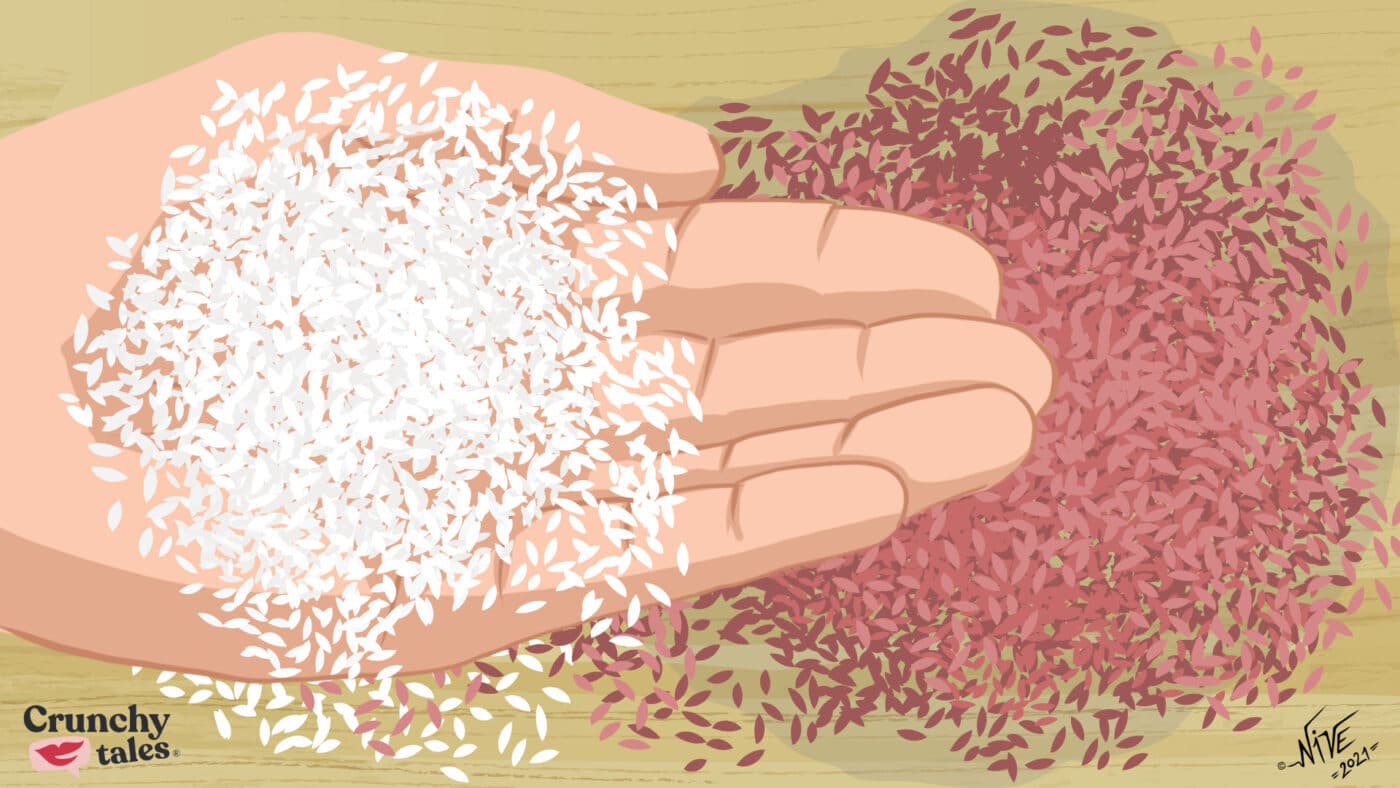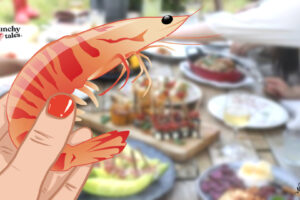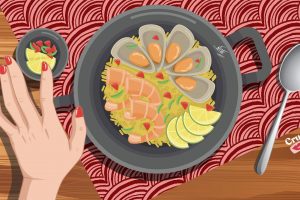Foodie Guide: Everything You Need To Know About Rice
I’ve always thought that somehow rice, in particular the varieties used for making Italy’s great risotto, is in my DNA as a result of some important family links: in 1475, my famous ancestor Gian Maria Galeazzo Sforza, the father of Caterina Sforza, earned his reputation for the development of rice cultivation on a much larger scale in the Duchy of Milan.
As a little girl, growing up in Italy where our own rice was cultivated on a family farm and arrived in late September in a 50 kg sack, I can remember there were literally dozens of different kinds of rice available specifically for making risotto compared to the three main varieties we find now; namely Arborio, Vialone Nano and Carnaroli, perhaps because until the introduction of industrial machinery in Italy, much of the work in the fields was carried out by hand.
Nowadays rice – the seed of the grass species Oryza Sativa- is a daily staple for nearly half of the world’s 7.8 billion people according to the International Rice Research Institute, with over 40.000 variants of grains grown and consumed around the world.
Getting to Know Rice Grains
If you’ve ever stopped to take a look at just how many different types and varieties of rice there are in your local grocery store aisle, you’ll know there are more than a few. And it can often be a little overwhelming trying to tell the difference between them all. Knowing which rice to cook for use in a particular dish is key to an authentic experience. So, to make things easier, I’ve put together a very brief guide to some of the main different varieties of rice, so you can choose the right kind to serve for your dinners.
The colour
- Brown rice: It’s when the outer hull of the grain has been removed but it still has its bran layer intact around the germ. That means there are more nutrients left in the rice, such as magnesium, iron and zinc, and it contains more fibre when compared to white rice. Although you can use it in many recipes, I would not recommend it for making risotto as you won’t get the creamy effect.
- Red Rice: Partially or fully covered with a red husk, the colour comes from a precious compound called anthocyanin, which has several medicinal and health-promoting properties, and it is therefore considered to be one of the healthiest varieties of rice to eat. There are at least 10 different varieties of red rice grown right across the world from the Camargue to Bhutan, Brazil and the Philippines. With a very distinctive nutty flavour, this rice is delicious simply boiled or steamed, or used in pilaff type recipes.
- Black Rice: Once known as The Forbidden Rice in Ancient China where only the rich could afford it, it has a distinct black colour that turns deep purple once cooked. The outermost layer of black rice grains contain one of the highest levels of anthocyanins to be found in any food and this rice has a similar amount of fibre as found in brown rice, with a similar nutty flavour. Some types of black rice are very glutinous, and in China, these varieties are often used for creating desserts. Black rice is most easily cooked by boiling for about 30 to 40 minutes (1 part rice to 3 parts water), then straining and serving as a bed for meat or fish dishes.
The size
Rice is typically classified by the size of the grain in three basic categories: long, medium, and short-grain.
- Long Grain Rice: It can be recognized immediately by the lengthy and cylindrical appearance of its grains. When cooked, the rice stays fluffy yet firm, the grains separated and not at all sticky. Examples of long grain rice include Jasmine, Basmati and traditional American long-grain white or brown rice. This is rice that can be boiled or steamed or used to make pilaf, Jambalaya or added to Burritos.
- Medium Grain Rice: It is usually about 2-3 times longer than it is wide. When cooked, the grains are tender, moist, and slightly chewy, tend to stick together a bit and release plenty of starch as they cook, which makes the results creamier. Examples are Bomba rice for Paella, Arborio and other risotto rice varieties like Carnaroli and Vialone Nano.
- Short Grain Rice: Short and plump, it’s only slightly longer than it is wide. The grains cling together without being mushy when properly cooked. They also have a higher starch content than other varieties. Most Japanese rice belongs to the short-grain variety and is used for making traditional Japanese dishes but it also good added to thicken soups and stews.
The most common varieties
Within these general grain length, there are many more specific kinds of rice, some of the most common are as follows:
- Jasmine Rice: Originally from Thailand, this is long grain rice with a distinctive Jasmine fragrance – ideal for making fried rice.
- Basmati Rice: Another rice with long elegant grains and a delicate fragrance. It is the best rice to use for Middle Eastern pilaffs and is the rice of choice to accompany Indian curries.
- Sushi rice: it‘s steamed Japanese rice that is flavoured with vinegar-based seasonings and is only used for making sushi. In Japan, it is known as sumeshi (vinegared rice).
- Japanese Rice: Because of its high proportion of starch and moisture content, Japanese rice is characteristically clingy and sticky and it is this unique stickiness that makes good sushi and defines the character of Japanese cuisine. In Japanese cooking you will find 2 basic forms of rice, both considered short-grain cultivars of Japonica rice. The first is uruchimai, known as the Japanese short-grain rice or ordinary rice or Japanese rice. This is used to make sushi, rice balls and everyday Japanese dishes and also to make sake and rice vinegar. The second is mochigome, known as Japanese sweet rice or glutinous rice. It is commonly used to make mochi rice cakes or traditional wagashi sweets. Mochigome is much stickier, chewier and glutinous than uruchimai. Although both are characterized by their sticky texture, they are used differently and are not interchangeable.
- Parboiled Rice: it‘s processed differently from other types of rice. The hull is left on as it is soaked and steamed, and then it is dried. Once the hulls are removed the rice is ready to consume. Cooked, either by boiling or steaming, it is dry with a firm texture. The grains absorb more nutrients because the hull is left on for longer during processing compared to regular white rice.
- Wild Rice: it’s not actually rice (even though it looks, cooks, and behaves just like rice). This variety is actually the seed from a type of marsh grass. In fact, it contains more antioxidants than actual rice and apparently may help improve heart health and lower the risk of diabetes. Once cooked it has a fluffy texture but tastes more rustic and earthy than actual rice.
What’s the right ratio of water-to-rice?
The ratio is typically 1 part rice to 1 ½ or 2 parts water, depending on the variety of rice. Long grain requires more water, medium grain needs slightly less and short-grain requires the least but in many recipes, it is often soaked for several hours in cold water and then steamed, not simmered in water.
How long does it take to cook rice?
Timing is dependent on the shape, quantity, and type of rice. White rice cooks more quickly than brown one because the outer fibrous bran layer will have been removed in the milling process. It takes usually 15 to 25 minutes for white rice, and 30 minutes or more for wild and/or black or red rice to cook. Most sticky rice requires soaking in cool water and then steaming for 30 to 45 minutes.
How much does dry rice yield once cooked?
Dry rice can typically swell to around three times its size. One cup of dried rice should yield about 3 cups of cooked rice.
Extra tips
If you want to preserve as much nutrition as possible, don’t cook your rice with excess water: when you strain it, you’ll also strain away many of the nutrients. Also, note that rinsing your rice first can help you wash away any extra starch, preventing unwanted clumping.
Do you know? Rice has an ancient and far-flung history, originating in China as far back as the first millennium B.C. according to some historians. From there it would appear that nomads and other travellers to Southern India and Asia Minor carried away this simple grain and set it on its way around the world. Many believe that Alexander the Great first brought rice back to the Mediterranean after his invasion of India in the 4th century B.C. But it wasn’t really until the Middle Ages that rice had any real impact in the Mediterranean when it began to be planted in Egypt, Sicily and Spain. Eventually, it was introduced to Lombardy and other areas of northern Italy where it found the perfect climate to flourish.
RECIPE
Torta Di Riso or Sweet Risotto Cake – Serves 6 to 8
The Sweet Risotto Cake is a typical dessert of Emilia Romagna, a region rich in gastronomic delicacies. Deliciously eggy and sweet, it seems that the spread of rice cakes is due to the “mondine”, the young women of the peasant families who in the early 1900s went to the rice paddies of northern Italy for seasonal work. The compensation of these girls consisted, in fact, not only of money but also of 1 kg of rice for each day of work. Hence the spread of rice throughout the region, which was then reused for the preparation of desserts.
- 150 g risotto or pudding rice
- 1 ¼ litre full-fat milk
- Butter for greasing
- 2 tbsp fine semolina
- 8 large free-range eggs
- 250 g caster sugar
- 3 tbsp brandy
- Juice and grated zest of 1 unwaxed lemon
- 3 tbsp pine kernels
- 3 tbsp chopped candied lemon or orange peel
- Put the rice and about two thirds of the milk into a saucepan. Boil slowly for 10 to 15 minutes, then leave to stand until cool for at least 30 minutes. Drain and reserve the boiled milk.
- Butter the cake tin thoroughly, and then sprinkle with the semolina. (Do not use a loose-bottomed tin, or all the liquid will all ooze away.) Turn the cake tin upside down to remove any loose semolina and discard.
- Pre-heat the oven to Gas mark 4/350 F/180 C.
- Beat all the eggs in a large bowl until foaming and pale yellow. Add the sugar gradually, beating constantly, and then add the brandy, the lemon juice and zest, the pine kernels and the candied peel. Stir thoroughly and then add the boiled rice and all the reserved boiled milk and the remaining 1/3 of the milk.
- Pour into the cake tin. Bake for about 50 minutes, or until a wooden skewer inserted into the centre comes out clean. The cake should be set and golden brown. Serve warm or cold.
Like this article? Sign up to our newsletter to get more articles like this delivered straight to your inbox.





